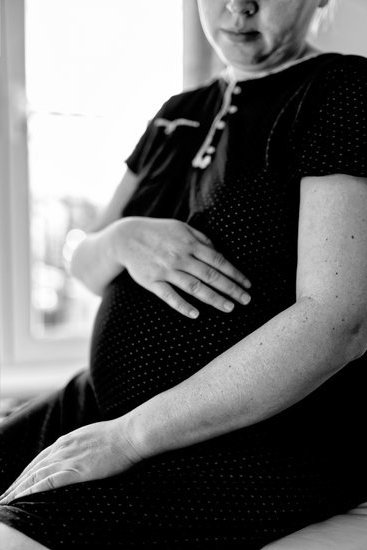Are you wondering how many trimesters of pregnancy there are? Pregnancy is divided into three stages, or trimesters. Each trimester brings about different physical and emotional changes for both the mother and the developing baby. Understanding the stages of pregnancy can help expectant mothers prepare for what to expect during each phase.
During the first trimester, which lasts from weeks 1-12, significant changes occur in a woman’s body as it nurtures the developing fetus. The second trimester, spanning from weeks 13-28, marks a period of continued growth and development for the baby. Finally, the third trimester covers weeks 29-40 and is a time when both mother and baby prepare for childbirth.
Throughout these three stages, there are various physical changes, symptoms, milestones, and discomforts that women may experience. It is essential for expectant mothers to be aware of what to anticipate during each trimester in order to manage any challenges and to embrace the journey of pregnancy with confidence and excitement.
The First Trimester
Physical Changes and Symptoms
During the first trimester, the body undergoes numerous physical changes as it adjusts to accommodate the developing fetus. Some common symptoms include morning sickness, fatigue, breast tenderness, frequent urination, and mood swings. It is important for pregnant women to stay hydrated, get plenty of rest, and eat small, frequent meals to cope with these discomforts.
Fetal Development
While the pregnant woman may not outwardly show signs of pregnancy during the first trimester, within her womb remarkable developments are taking place. By week 12, all major organs have begun to form, and the fetus is about the size of a lime. The baby’s heartbeat can be heard through ultrasound at this stage, bringing joy and reassurance to many expectant parents. This period emphasizes how essential proper nutrition and prenatal care are for supporting healthy fetal development.
Overall, the first trimester of pregnancy is a critical time in which multiple changes occur within both the mother’s body and in fetal development. It is important for expecting mothers to seek regular prenatal care, maintain a balanced diet, stay physically active (as recommended by their healthcare provider), and educate themselves on what they can expect at each stage of their pregnancy journey.
Physical Changes and Symptoms During the First Trimester
During the first trimester of pregnancy, a woman’s body undergoes numerous physical changes as it begins to accommodate and nourish the growing fetus. One of the first noticeable changes is breast tenderness and swelling, as the body prepares for lactation. Hormonal changes can also contribute to fatigue, nausea, and frequent urination during this time. Morning sickness, characterized by nausea and vomiting, is a common symptom that varies in severity among women.
The hormonal fluctuations during the first trimester can also lead to emotional ups and downs for expectant mothers. It is not uncommon for women to experience mood swings, anxiety, or even depression due to these hormonal changes. Understanding these symptoms can help women manage their emotional well-being during this transformative period.
Furthermore, physical changes such as weight gain and an expanding waistline may become noticeable in some women during the first trimester. As the uterus grows to accommodate the developing fetus, it exerts pressure on the bladder and other pelvic organs, contributing to frequent urination and possibly constipation. These physical discomforts are all part of the body’s preparation for pregnancy.
Additionally, pregnant women may experience food cravings or aversions during this trimester. While some may develop a sudden fondness for certain foods, others may find that previously enjoyed foods now trigger nausea or are unappealing. These cravings and aversions are often attributed to hormonal changes but can vary widely from woman to woman. Understanding these symptoms can help expectant mothers navigate their way through this crucial stage of pregnancy with greater ease.
The Importance of Prenatal Care
Regular prenatal check-ups with healthcare providers are essential during the first trimester to monitor the progress of both mother and baby. These visits allow healthcare professionals to address any concerns or complications that may arise early on in the pregnancy. Additionally, prenatal appointments provide opportunities for expectant mothers to ask questions about their changing bodies and receive guidance on maintaining a healthy lifestyle throughout their pregnancy journey.
Dietary Considerations
During the first trimester, paying attention to nutritional needs becomes critical as a woman’s body works hard to support her own health while nurturing a developing fetus. Adhering to a balanced diet rich in vitamins, minerals, protein, and healthy fats can help ensure proper growth and development of the baby while supporting maternal health.
It is advisable for pregnant women to consult with healthcare providers or nutritionists regarding dietary choices that align with their specific needs during this stage of pregnancy.
The Second Trimester
During the second trimester of pregnancy, which typically spans from weeks 13 to 28, expecting mothers may experience a shift in their physical and emotional well-being. This period is often referred to as the “honeymoon” phase of pregnancy, as many women find relief from the early symptoms of morning sickness and fatigue.
Fetal development during the second trimester is characterized by significant growth and maturation. By week 20, most mothers will have their anatomy ultrasound, providing them with the opportunity to see their baby’s form and possibly even determine its gender. Many women also report feeling their baby’s movements for the first time during this trimester, a reassuring sign of their baby’s increasing vitality.
While the discomforts of nausea and fatigue are often alleviated during this stage, they may be replaced by new challenges such as back pain, leg cramps, and shortness of breath. Proper self-care and regular prenatal check-ups are important for managing these discomforts and ensuring the continued health and well-being of both mother and baby throughout the second trimester.
As expected due dates approach, parents-to-be can begin preparing for childbirth by attending childbirth education classes, making a birth plan, and familiarizing themselves with labor and delivery procedures. These preparations can help alleviate anxiety surrounding labor while empowering individuals to make informed decisions about their birthing experience.
Fetal Development and Milestones During the Second Trimester
The second trimester of pregnancy, which spans from weeks 13 to 28, is often considered the most enjoyable and comfortable period for many expectant mothers. This trimester brings numerous fetal development milestones that give expecting parents a deeper insight into their baby’s growth and progress.
During the second trimester, the fetus undergoes rapid growth and development. By week 20, the baby’s organs are fully formed, hair begins to grow, and their sense of movement becomes more pronounced. Most importantly, this period marks the point at which the baby can survive outside the womb with medical intervention if born prematurely.
Expectant mothers may experience several physical changes during this stage as well. Many women find relief from morning sickness as they enter their second trimester while also noticing a boost in energy levels. Additionally, abdominal enlargement becomes more noticeable as the uterus expands to accommodate the growing fetus.
While most discomforts from early pregnancy begin to subside during this time, some new symptoms may emerge in the second trimester. These can include back pain, leg cramps, and increased vaginal discharge – all of which are typical experiences but should be monitored by a healthcare provider.
| Fetal Development Milestones | Physical Changes During Second Trimester |
|---|---|
| By week 20: organs fully formed. | Morning sickness relief and increased energy levels. |
| Baby hair begins to grow. | Noticeable abdominal enlargement. |
Coping With Common Discomforts in the Second Trimester
During the second trimester of pregnancy, which spans from weeks 13 to 28, many women experience a relief from the nausea and fatigue that often accompany the first trimester. However, this period also comes with its own set of challenges and discomforts.
The most common physical discomforts experienced in the second trimester include backaches, increased appetite, stretch marks, and round ligament pain. It’s essential for expectant mothers to understand how to cope with these discomforts in order to have a more pleasant pregnancy experience.
One of the most prevalent issues during the second trimester is backache caused by the growing uterus and hormonal changes. To alleviate this discomfort, it’s important for expectant mothers to practice good posture, wear supportive shoes, and engage in gentle exercise such as prenatal yoga or swimming. Additionally, using a pregnancy pillow while sleeping can help support the back and ease discomfort.
Many women also experience an increase in appetite during their second trimester due to the baby’s growth spurt. While it’s important to eat nutritiously during pregnancy, it can be challenging to balance increased cravings with healthy eating habits. Finding a balance between satisfying cravings and consuming nutrient-dense foods is crucial for both maternal health and fetal development.
Another common discomfort encountered during the second trimester is round ligament pain – sharp or crampy pains felt near the hip bones or along the lower abdomen due to stretching ligaments supporting the uterus. To manage this discomfort, moving slowly when changing positions, practicing good posture, and gentle stretching exercises can offer relief.
| Common Discomfort | Coping Mechanism |
|---|---|
| Backache | Practice good posture, wear supportive shoes, engage in gentle exercise |
| Increase in Appetite | Balance between satisfying cravings and consuming nutrient-dense foods |
| Round Ligament Pain | Moving slowly when changing positions,p racticing good posture, and gentle stretching exercises |
The Third Trimester
During the third trimester of pregnancy, expectant mothers will experience a variety of physical and emotional changes as they prepare for the arrival of their baby. This stage of pregnancy typically spans from week 29 to week 40, with the anticipation of labor and delivery becoming more pronounced as the due date approaches. Here are some key aspects to consider during the third trimester:
1. Fetal Development: By the start of the third trimester, the fetus has already developed all of its essential organs and body systems. However, during these final weeks, the baby will continue to grow and mature rapidly. Expectant mothers may feel an increase in fetal movements as their baby’s activity levels peak.
2. Physical Changes: As the uterus expands to accommodate the growing baby, expectant mothers may experience increased discomfort such as back pain, pelvic pressure, and shortness of breath. Some women also develop swelling in their hands and feet due to fluid retention.
3. Preparing for Labor: During this stage, it is crucial for pregnant women to start preparing for labor and delivery. This includes creating a birth plan, packing a hospital bag, and familiarizing oneself with signs of labor. Additionally, childbirth classes can provide valuable information and support for expectant parents as they approach delivery.
4. Emotional Well-being: The third trimester can be an emotionally intense time for expectant mothers as they navigate feelings of excitement, anxiety, and impatience about meeting their baby. It’s important for pregnant women to seek support from their partner, friends, or healthcare providers as they process these emotions and prepare for parenthood.
As the due date draws near, prenatal appointments will become more frequent to monitor both the mother’s health and the baby’s well-being. With proper care and preparation during this stage of pregnancy, expectant mothers can embrace the journey toward welcoming their newborn into the world.
Preparing for Labor and Delivery in the Third Trimester
During the third trimester of pregnancy, expectant mothers are preparing for the final stage before childbirth. This stage encompasses weeks 29 to 40 of pregnancy, and it is a time when both excitement and anxiety may be at their peak. Understanding what to expect during the third trimester can help alleviate some of these feelings and make the preparations for labor and delivery feel more manageable.
Some of the key things that expectant mothers can do during this time to prepare for labor and delivery include:
- Attending childbirth education classes to learn about the labor process, pain management options, and breathing techniques
- Creating a birth plan that outlines preferences for labor and delivery, including who will be present at the birth, pain relief choices, and any specific requests
- Packing a hospital bag with essential items for both mom and baby, including comfortable clothing, toiletries, snacks, important documents, and a going-home outfit for the baby
In addition to these practical preparations, women in their third trimester should also focus on their physical health. Prenatal appointments become more frequent during this time, allowing healthcare providers to monitor both mother and baby closely. It is also essential for pregnant individuals to continue taking prenatal vitamins as recommended by their healthcare provider.
Lastly but equally important, expectant parents should also use this time to emotionally prepare themselves for labor and delivery. This can involve talking openly about any fears or concerns with their partner or support system, seeking out positive birth stories from other parents, practicing relaxation techniques such as meditation or visualization exercises, and finding ways to stay mentally strong as they approach the end of their pregnancy journey.
Conclusion
In conclusion, pregnancy is a remarkable and transformative journey for women. Understanding the three trimesters of pregnancy is crucial for expectant mothers to prepare physically, emotionally, and mentally. The first trimester, which spans from weeks 1-12, brings physical changes such as morning sickness and fatigue.
The second trimester, from weeks 13-28, sees the development of the baby’s organs and features while bringing its own set of discomforts such as backaches and heartburn. Finally, the third trimester, from weeks 29-40, focuses on preparing for labor and delivery.
Embracing the journey of pregnancy and childbirth involves taking care of oneself by eating healthily, getting enough rest, and seeking prenatal care regularly. It also encompasses mental preparation through childbirth education classes and connecting with other expectant mothers for support. Women should feel empowered to discuss any concerns with their healthcare provider during each trimester to ensure a healthy pregnancy.
As the body goes through significant changes during each trimester, it is essential for women to prioritize self-care throughout the entire process. While it is normal to experience discomforts or anxieties at different stages of pregnancy, knowing what to expect in each trimester can help alleviate some of those concerns. Ultimately, embracing this incredible journey includes being kind to oneself and staying informed about the changes that come with carrying a new life.
Frequently Asked Questions
What Are the 3 Trimesters of Pregnancy?
The three trimesters of pregnancy are each approximately 13 weeks long. The first trimester starts from week 1 and goes until week 13, the second trimester goes from week 14 to week 26, and the third trimester spans from week 27 until the birth of the baby.
Which Is the Hardest Trimester in Pregnancy?
For many women, the first trimester is often considered the hardest due to symptoms like nausea, morning sickness, fatigue, and mood swings. The body is going through significant changes during this time, which can make it physically and emotionally challenging.
What Trimester Is Most Critical?
The first trimester is actually the most critical period of pregnancy because it is when the baby’s organs and major body systems are developing rapidly. This stage is when there is a higher risk of miscarriage or birth defects if something goes wrong, so it’s essential for mothers-to-be to take special care during this time.

Welcome to my fertility blog. This is a space where I will be sharing my experiences as I navigate through the world of fertility treatments, as well as provide information and resources about fertility and pregnancy.





